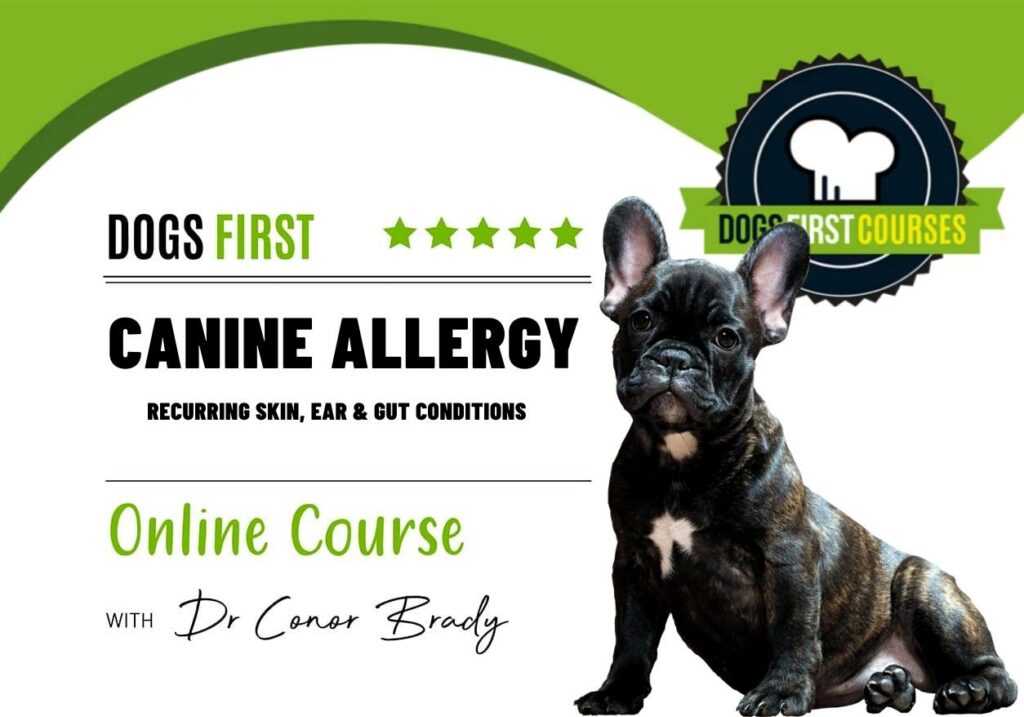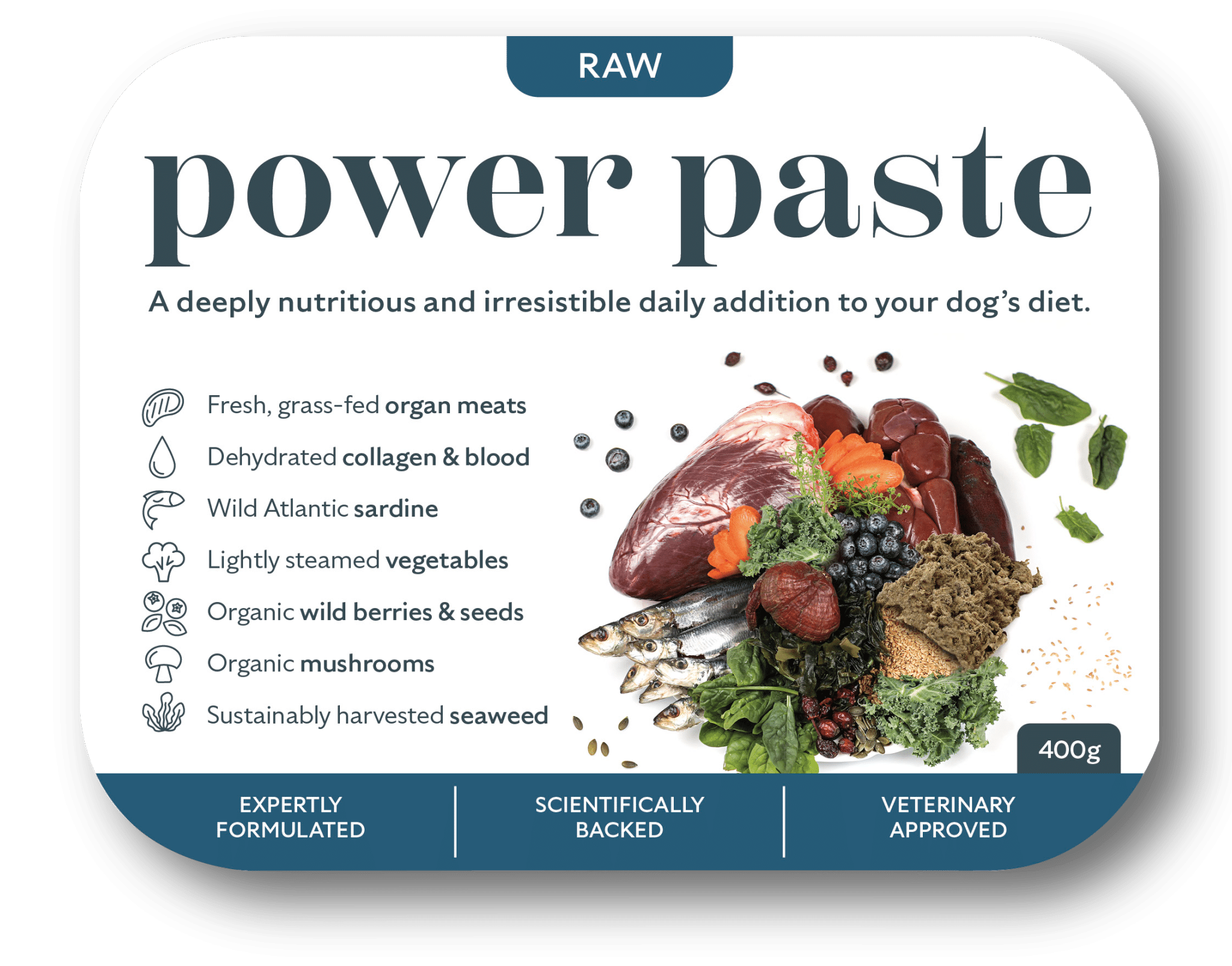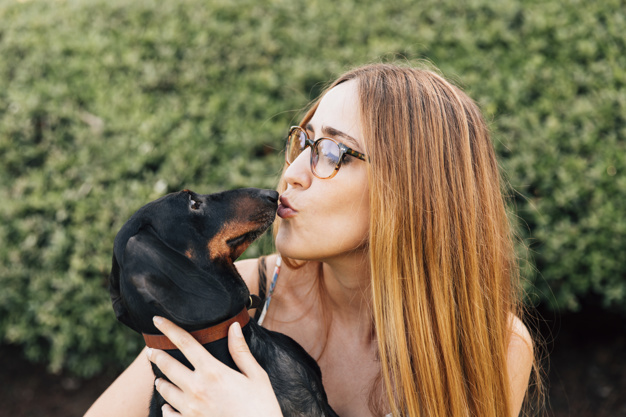In this article, we cover:
This article is the 1st part of my 5 part series about Allergies in Dogs. Here is the list for you to bookmark:
- Dog Food Allergies vs Food Intolerance: The big difference [Part 2]
- What Are Dogs Allergic To? [Part 3]
- Hypoallergenic Dog Diet: How To Do It at Home Better Than Any Kibble
- Elimination Diet For Dog Allergies [Part 5]
It’s very likely you clicked on this article because you have a dog suffering from recurring skin, ear and gut conditions (ReSEGs, as we like to shorten it to here at Dogs First).
If so, we can assume the following about your current situation: you are at your wit’s end, constantly being told “your dog has allergies”. You are stressed and months down the line of spending fortunes on overpriced “hypoallergenic” kibble and drugs such as NSAIDs, antibiotics and Apoquel; despite all this, your dog is still itching, still has gut issues and is generally very unhappy.
If this is you, read on; we can help you understand why your dog is suffering so much from allergies and, most importantly, how you can fix it for good.
 LUCAA+ Pet Probiotic Allergen-Free is a dog skin allergy prevention spray.
LUCAA+ Pet Probiotic Allergen-Free is a dog skin allergy prevention spray.
Available to buy on the Dogs First shop
Dog allergy or intolerance – the vital difference
You have undoubtedly been told a million times that your itchy, gut-sick dog has food allergies. Before we begin, it is important to note that your dog most likely has a food intolerance, NOT an allergy.
True food allergies are rare; experts estimate they affect no more than 1-3% of dogs who experience such food reactions. Think of someone with a peanut allergy; the reaction is immediate, dramatic, violent.
However, we bet the symptoms your dog is currently experiencing, are not as dramatic as that. More often that not, they have been developing over time – chronic skin issues, ear infections, diarrhoea etc.. These have all the hallmarks of an insidious food intolerance.
You can dive deeper into the differences between allergies and intolerances here. For ease, we will still often refer to the word allergy in this series of articles, but it is important to know the difference.
Symptoms of food allergies in dogs
Your dog can exhibit a dizzying array of symptoms of allergies/ intolerances, and there are many different types of allergies; however, this article will concentrate on the symptoms of food allergies.
- Inflamed, red skin with a rash
- Itching, hair loss, hyperpigmentation
- Nibbling toes
- Chronic ear issues
- Diarrhoea
- Anal gland issues
- Other GI issues (flatulence, reflux, noisy tummies)
- Recurring gut infections
- Poor behaviour

Top causes of food allergies in dogs
In part three, we go into much more detail on why these foods pose such a problem for dogs, but these are the top causes of dog food allergies/intolerances.
- Wheat (the top ingredient in ultra-processed kibble)
- Chicken
- Beef
- Dairy
- Nasty additives and chemicals added to ultra-processed dog food cause huge issues with allergy/intolerance in dogs.
Other chemicals to cut out would be chemical flea and worm treatments (usually for dogs with no fleas or worms), “kennel cough” vaccines, and annual boosters in dogs (after one year of age, in line with advice from the top veterinary immunologists)
How do food allergies in dogs develop?
The recurring skin and ear and gut issue your dog is experiencing, nibbling their toes, scratching incessantly; it’s all down to what is happening inside the gut, but what does the gut have to with it..?
● Meet the GALT (Gut Associated Lymphoid Tissue)
80% of the immune system is around the gut. This tissue that surrounds the gut is called the GALT (Gut Associated Lymphoid Tissue). The GALT’s job is to ensure that everything entering the body is friend, not foe.
It monitors how well the gut machinery works, and when things go wrong, bad diet, for example, it acts like a soldier, fighting with everything it has to attack invaders. The result of antagonising 80% of the body’s immune system is massive amounts of systemic inflammation, affecting inside and outside the gut.
● It begins with Dysbiosis in the gut microbiome…
When the gut flora, the GALT’s buddies on the inside, are thrown out of balance (by the wrong food, stress, chemicals etc.), this causes pathogenic bacteria to take over and colonise the gut (dysbiosis).
These baddies do not care about digesting food, maintaining a healthy gut lining, or giving your dog all those happy head compounds; they don’t give a damn about their host; they want to cause chaos in the form of inflammation.
Allowed to persist (i.e. the wrong food is still being fed), the inflammation, and the GALT’s response to it, cause degradation of the gut lining, which is the road to a leaky gut.
● Leaky gut
Think of the gut lining as a castle wall. Usually, everything enters that castle via the main gate, over the drawbridge. In the case of the gut, this is properly digested and broken down protein, fats and carbohydrates into amino acids, fatty acids and sugars.
Inside the castle, just inside the gate, is the GALT, surveying all that comes in. Its job is to stop enemies entering the blood and getting to the king and queen, the heart and brain. Anything suspicious will be stopped and marked for elimination.

However, during leaky gut, the protective wall is crumbling. Now, lots of strange, half-digested debris risks breaching the walls and accessing the interior, some of which might be bad guys.
The GALT springs into action and begins furiously tagging these half-digested bits of chicken or beef or wheat – they are now enemies. If any more of this stuff passes your lips, in any form, we will have you removed from the premises poste haste. Next thing you know you have diarrghoea or weepy eyes or pustules on your skin or ear wax or a flemmy cough, etc.
Now your dog is developing a NON ALLERGIC food sensitivity (i.e. not the result of a genetic mishap but a mechanical breakdown in gut function).
At this point, we begin changing foods, trying to find something that works but if you don’t build back up those walls, no new protein will be tolerated for long as inevitaaly they risk making their way through the cracks. If this isn’t addressed, your dogs’ list of potential allergens will gro.
Simply put, the castle walls need fixing first.
Think of allergies in dogs like a house fire…..
Here’s where we use another analogy (which Dr Conor Brady gets all the credit for!). As intolerances develop, an enormous amount of inflammation is produced, affecting virtually all body parts (which parts depends on the dogs’ individual genetic make up).
Sadly, this makes it very confusing for health practioners trying to treat such a patient (they call it the great imitator), made worse by the fact the link between food and all this inflammation is not taught in college to any real degree, despite what they might tell you and hence they keep recommending dry, ultraprocessed, chemically preserved, multi-ingredient pet food as some form of solution, which only makes things worse…and hence your pet ends up on a long list of monthly shots of immune suppressing meds.
There is no cure down that road.

It’s like the dog is a house on fire. The symptoms you are seeing are heat and smoke billowing out of the windows and chimney, yet the firefighters are standing there discussing how to stop the smoke coming out the windows and chimney. when they should be concentrating on putting out the raging fire on the INSIDE of the house.
Extinguish the flames inside first, then see what damage is left. That is where you need to focus.
If you don’t, the ruined gut and the GALT’s reaction to it will continue to produce enormous amounts of inflammation. This will start to cause many immune complexes, which overwhelm the kidney and liver’s ability to deal with them.
Chronic inflammation can lead to joint issues such as arthritis, sore, itchy skin dermatitis and often, chronic ear infections – all smoke coming from the roof of a burning house. We must get the gut back into symbiosis first; this is the solution to recurring skin, ear and gut conditions (ReSEGs).
How can I fix my dog’s allergies?
So now you understand why your dog is suffering from so many issues from food intolerances, you will want to know how to fix them. We have bombarded you with huge amounts of information in this article, so our dog allergy articles are split into the following sections.
- Part two – Allergies versus intolerance
- Part three – What foods etc., cause intolerances and why
- Part four – Hypoallergenic diet – immediate relief for your itchy, gut-sick dog
- Part five – Why an elimination diet is vital and how to go about it

BioFunction8 | Natural relief from chronic gut issues… or your money back.
Further information on allergies in dogs
If you would like to know more and delve deeper into canine allergies and exactly how to help your dog, our new online course, Canine Allergy; Recurring Skin Ear and Gut Issues will be an enormous help, and the first thirty minutes are free! Sign up here.
Consultations
We offer Zoom consults to help you every step of the way with your dog’s recurring skin, ear and gut issues; please book here.












